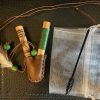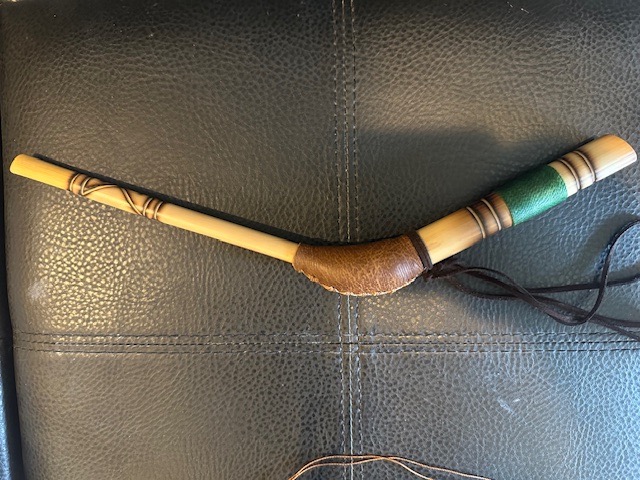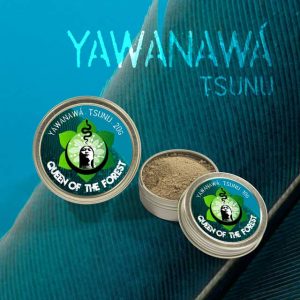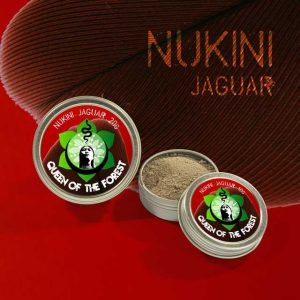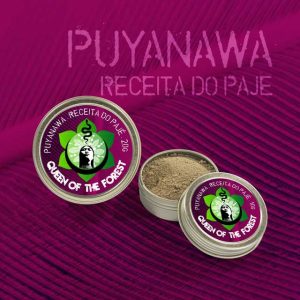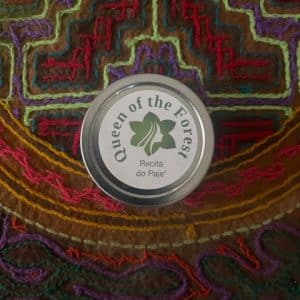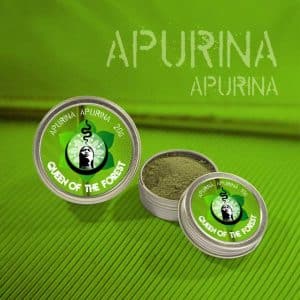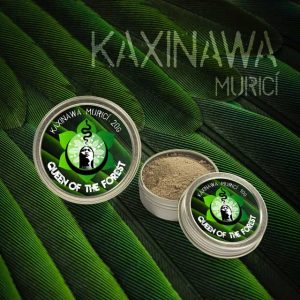Handmade Wooden Tepi
$89.00
Beautiful handmade rapé (pronounced ha-pay or rah-pay) applicator Tepi made out of wood . Handmade by an indigenous sister in Estrela Brilhante Daime Church in Maranhão, Brazil . We only have a few available so hurry. These won’t last.
Out of stock
A tepi is a traditional applicator used for administering rapé (also spelled hapé or hapeh), a sacred snuff used by various Indigenous tribes in the Amazon, particularly for spiritual, medicinal, and ceremonial purposes. The tepi is distinct from the kuripe, another type of applicator, in that it is designed for administering rapé to another person, rather than self-administration.
Description and Construction
The tepi typically consists of two hollow tubes connected at an angle, often resembling a “Y” shape. These tubes are traditionally crafted from bamboo, bone, or wood, and are sometimes adorned with intricate carvings, beads, or natural fibers that reflect the cultural heritage of the people who made them. The materials used in creating a tepi are chosen not only for their durability but also for their spiritual significance.
How to Use a Tepi Applicator
- Preparation: Before using a tepi, it is important to create a sacred space and set a clear intention. The person administering the rapé (often a shaman or someone experienced in its use) will prepare the rapé powder by placing a small amount into the wider end of the tepi.
- Application: The person receiving the rapé sits calmly, focusing on their breath and intention. The shaman or facilitator places the narrow end of the tepi into the recipient’s nostril, while the other end is held in the facilitator’s mouth. The facilitator then blows the rapé forcefully into the recipient’s nostril. This process is repeated for the other nostril. The force and method of the blow are crucial, as they determine how deeply the rapé enters the nasal passages and how effectively it activates the intended spiritual or healing effect.
- Aftercare: After the administration, the recipient usually sits quietly to allow the effects of the rapé to unfold. The experience can include a range of sensations, such as heightened awareness, emotional release, or a deep sense of grounding.
Care and Maintenance
To ensure the longevity and effectiveness of the tepi applicator, it should be cleaned and maintained with care:
- Cleaning: After each use, gently clean the tepi with a dry cloth to remove any residual rapé powder. Avoid using water or harsh chemicals, as these can damage the natural materials.
- Storage: Store the tepi in a dry, cool place, ideally wrapped in a cloth or kept in a dedicated container to protect it from dust and moisture.
- Spiritual Care: Many practitioners also believe in maintaining the tepi’s spiritual integrity by regularly smudging it with sacred herbs like sage or palo santo. This practice is said to cleanse the tepi of any residual energies, ensuring it remains a pure conduit for administering rapé.
Significance in Rapé Ceremony
The use of a tepi is a deeply respectful and sacred act, reflecting the connection between the facilitator and the recipient. The tepi is not just a tool but a vessel that carries the prayers, intentions, and healing power of the community. Using it with mindfulness and respect honors the traditions of the Indigenous peoples who have shared this sacred medicine with the world.
By integrating the keywords “tepi” and “hapeh applicator” into your content, you can enhance its visibility and ensure that those seeking information on traditional rapé application tools find relevant and insightful content.
Related
| Weight | 0.5 oz |
|---|


